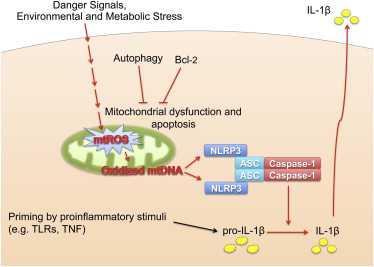Nature:揭示皮肤中记忆T细胞阻止病毒感染机制
2012-04-14 towersimper 生物谷
最近,研究人员在人身体与环境打交道的部分(如皮肤、肺部和胃肠道)发现一类非常重要的被称作记忆T细胞(memory T cell)的免疫细胞。然而,这些“常驻” 记忆T细胞如何产生仍是一个谜。为了揭示它们在我们的免疫系统如何记住病原体初次感染和如何阻止再次感染中发挥的重大作用,研究人员一直在广泛地开展研究。 如今,美国布莱根妇女医院(Brigham and Women's Hospital) 皮肤

最近,研究人员在人身体与环境打交道的部分(如皮肤、肺部和胃肠道)发现一类非常重要的被称作记忆T细胞(memory T cell)的免疫细胞。然而,这些“常驻” 记忆T细胞如何产生仍是一个谜。为了揭示它们在我们的免疫系统如何记住病原体初次感染和如何阻止再次感染中发挥的重大作用,研究人员一直在广泛地开展研究。
如今,美国布莱根妇女医院(Brigham and Women's Hospital) 皮肤科主任和哈佛大学皮肤医学教授Thomas S. Kupper博士与研究员Xiaodong Jiang博士领导的一个研究小组使用一种涉及牛痘病毒感染皮肤的模型来解答关于这些新发现的细胞如何保护我们免受再次感染的重要问题。2012年2月29日,相关研究结果发表在《自然》期刊上。
Jiang和Kupper利用牛痘病毒感染皮肤来研究中央型记忆T细胞(central memory T cell,即在血液循环流通的T细胞)和常驻型记忆T细胞(resident memory T cell)在保护性免疫中所起的相对作用。他们发现在牛痘病毒感染之后,疾病特异性T细胞不仅是被快速地招募至感染位点,而且也被招募至皮肤所有区域。
他们进一步证实随后又遭遇的多次牛痘病毒感染导致在皮肤上积累起更加多的常驻型记忆T细胞,而且这些细胞在皮肤内能够长时间保持存在。
最后,Jiang和Kupper第一次证实常驻型记忆T细胞在对抗感染上是最重要的保护性免疫细胞,比中央型记忆T细胞还要重要,因为中央型记忆T细胞本身产生的快速免疫保护效率不高。
“发现在保护性免疫中常驻型记忆T细胞比中央型记忆T细胞更加重要是令人吃惊的,这使得我们不得不重新思考当前的免疫法则(immunologic dogma)”, Kupper说。
尽管这项研究使用皮肤作为模式系统,但是这些结果能够外推至肺部、胃肠道和其他与外部环境打交道的其他上皮组织。
这些发现揭示着对传染病产生记忆的起着重要作用的T细胞可能常驻于组织中,而不是血液里。
“免疫系统在合适场所和时间提供合适的T细胞来保护我们不受充满着潜在有害性病原体的环境的影响”, Kupper说。
这些发现也提示着人们应当对疫苗进行优化以便准确地产生这类在组织中长期持续存在的常驻型记忆T细胞,同时也提示着人们当前在开发疫苗时集中注意力于抗体生产可能并不是如此重要。
“这项研究提示着人们应当对如何构建和递送疫苗进行根本性的重新评估”, Kupper说,“这些结果改变着我们考虑免疫系统和接种抗传染病疫苗的方式。” (生物谷:towersimper编译)

doi:10.1038/nature10851
PMC:
PMID:
Skin infection generates non-migratory memory CD8+ TRM cells providing global skin immunity
Xiaodong Jiang, Rachael A. Clark, Luzheng Liu, Amy J. Wagers, Robert C. Fuhlbrigge & Thomas S. Kupper
Protective T-cell memory has long been thought to reside in blood and lymph nodes, but recently the concept of immune memory in peripheral tissues mediated by resident memory T (TRM) cells has been proposed. Here we show in mice that localized vaccinia virus (VACV) skin infection generates long-lived non-recirculating CD8+ skin TRM cells that reside within the entire skin. These skin TRM cells are potent effector cells, and are superior to circulating central memory T (TCM) cells at providing rapid long-term protection against cutaneous re-infection. We find that CD8+ T cells are rapidly recruited to skin after acute VACV infection. CD8+ T-cell recruitment to skin is independent of CD4+ T cells and interferon-γ, but requires the expression of E- and P-selectin ligands by CD8+ T cells. Using parabiotic mice, we further show that circulating CD8+ TCM and CD8+ skin TRM cells are both generated after skin infection; however, CD8+ TCM cells recirculate between blood and lymph nodes whereas TRM cells remain in the skin. Cutaneous CD8+ TRM cells produce effector cytokines and persist for at least 6 months after infection. Mice with CD8+ skin TRM cells rapidly cleared a subsequent re-infection with VACV whereas mice with circulating TCM but no skin TRM cells showed greatly impaired viral clearance, indicating that TRM cells provide superior protection. Finally, we show that TRM cells generated as a result of localized VACV skin infection reside not only in the site of infection, but also populate the entire skin surface and remain present for many months. Repeated re-infections lead to progressive accumulation of highly protective TRM cells in non-involved skin. These findings have important implications for our understanding of protective immune memory at epithelial interfaces with the environment, and suggest novel strategies for vaccines that protect against tissue tropic organisms.
本网站所有内容来源注明为“梅斯医学”或“MedSci原创”的文字、图片和音视频资料,版权均属于梅斯医学所有。非经授权,任何媒体、网站或个人不得转载,授权转载时须注明来源为“梅斯医学”。其它来源的文章系转载文章,或“梅斯号”自媒体发布的文章,仅系出于传递更多信息之目的,本站仅负责审核内容合规,其内容不代表本站立场,本站不负责内容的准确性和版权。如果存在侵权、或不希望被转载的媒体或个人可与我们联系,我们将立即进行删除处理。
在此留言














#Nat#
54